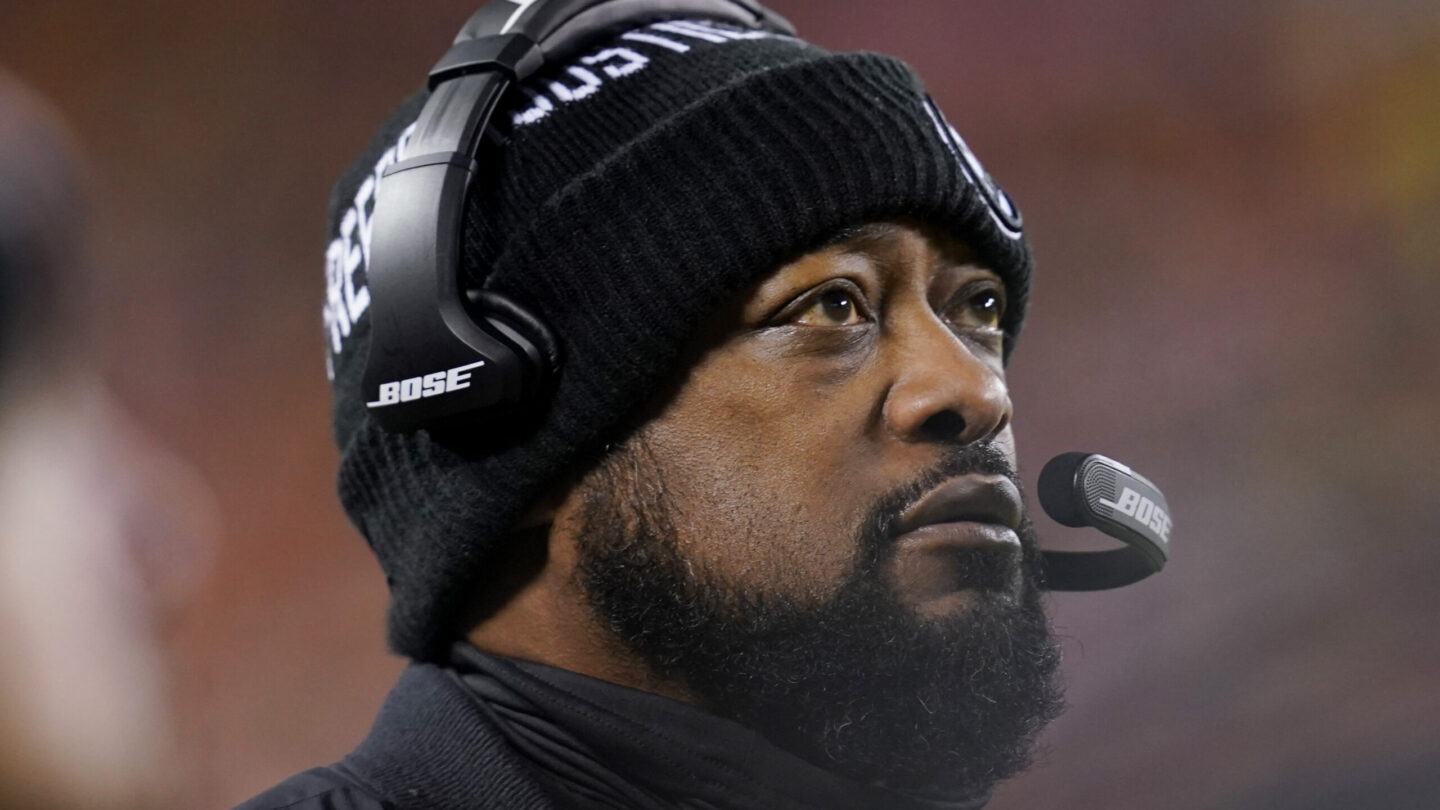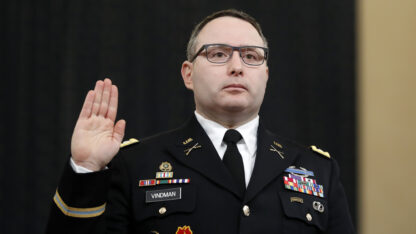Nearly two decades ago, with few coaches of color in the NFL, the league knew that something had to be done.
Spurred on by the Pittsburgh Steelers’ Dan Rooney — then the team’s owner and a longtime trailblazer for diversity in the league — the National Football League adopted a policy that now colloquially bears his name. The Rooney Rule, which took effect in 2003, sought to correct inequities at the top of pro football’s hierarchy by requiring teams to interview minority candidates for head coaching vacancies.
It has been nearly 20 years, and the NFL has lost yardage. As the league prepares for the Super Bowl later this month, Mike Tomlin of the Steelers is the only Black head coach. The Washington Commanders‘ Ron Rivera, who is Latino, and the New York Jets’ Robert Saleh, of Lebanese descent, are the only other nonwhites in top coaching positions among the league’s 32 franchises.
Brian Flores, who led the Miami Dolphins to their first back-to-back winning seasons in decades, and David Culley, who had been the Houston Texans’ head coach, were fired in January. Both are Black. Earlier this week, Flores filed a class action suit against the NFL, the Dolphins, the Denver Broncos and the New York Giants. His lawsuit alleges discrimination in his firing and in his interviews for the head coaching jobs with the other teams.
Meanwhile, top coaching positions that opened up at the end of the season are rapidly being filled — by more white candidates. The Bears recently hired Matt Eberflus, the Broncos picked up Nathaniel Hackett and the Giants brought on Brian Daboll. Some Black candidates are thought to be in serious contention for the few slots still up for grabs. But any such hires would barely move the needle on the NFL’s dismal diversity numbers.
It’s not the rule, it’s the people
Doug Williams, the first African American quarterback to win a Super Bowl, tells NPR that he would give the Rooney Rule a D.
“But it’s not the rule that’s not working, it’s the people,” says Williams, who is now senior adviser to the Washington Commanders. “It’s not just football, it’s America as a whole.”
Williams and others say they are tired of watching good, qualified head coach candidates of color passed over — year after year.
Take Eric Bieniemy. He spent eight years as an NFL running back in the 1990s before moving to the sidelines. As offensive coordinator for the Kansas City Chiefs, he has helped propel one of the league’s top-ranked teams for the last four seasons. The Chiefs lost by three points in overtime to the Super Bowl-bound Cincinnati Bengals. A Chiefs win would have had the team playing for a championship for the third time in as many years. Yet, in nearly a dozen interviews across the league over the past few years, Bieniemy hasn’t managed to garner a head coaching position.
John Feinstein, author of” Raise a Fist, Take a Knee: Race and the Illusion of Progress in Modern Sports,” tells NPR that in an interview for the book, Bieniemy told him “some of those guys were legitimately looking at me as a possible head coach. Other guys were just, you know, carrying out their Rooney Rule … obligations, and you can tell, when you walk into the room, which is which.”
Jim Caldwell has had greater success in his coaching career — until recently. He’s been on the coaching staff of two Super Bowl champion clubs and was head coach of the Indianapolis Colts from 2009 to 2011 and the Detroit Lions from 2014 to 2017. Despite his resume, Caldwell has been passed over for head coaching jobs with several franchises since he was let go by the Lions five years ago.
Jonathan Beane, the NFL’s chief diversity and inclusion officer, acknowledges that the Rooney Rule has fallen short of its ultimate goal, but he credits the policy with getting more minority candidates in front of hiring panels. “When you have more candidates from different backgrounds that are part of the process and actually are in the room to compete for roles, the opportunity of a diverse candidate getting hired goes up,” he tells NPR.
Feinstein says the problem with that thinking is that too often the rule is simply about checking a box to prove compliance. “I think for a lot of the NFL, the Rooney Rule is simply there so they can say, ‘Hey, we interviewed Brian Flores; hey, we interviewed Eric Bieniemy,'” he says. “And until that attitude changes, you can require five [minority candidate] interviews for every opening” and it still won’t make a difference.
There are few owners of color in the NFL
The NFL has only two owners of color, Kim Pegula, who is Asian American and co-owns the Buffalo Bills with her billionaire husband, and Jacksonville Jaguars owner Shahid Khan, who was born in Pakistan.
Many of the owners simply perceive a white coach as the safe choice, says Jodi Balsam, a former counsel for operations and litigation at the NFL.
“I don’t think there’s a single NFL owner out there who thinks to himself, ‘I won’t hire somebody who’s Black,'” Balsam tells NPR. But there are “risk-averse” owners, she concedes. “When it comes to hiring at the senior-most levels, they tend to revert to what they’re comfortable with … and they perceive hiring somebody who’s Black as risky.”
To be sure, the current record on minority hires for the top coaching job is a low-water mark for the league. Things were better at the end of the 2010-2011 season, and again in 2017-2018, with a quarter of the head coaching positions held by minorities. But there have been other lows, too: the Detroit Lions were fined $200,000 for violating the policy soon after it took effect. And nearly a decade later, in 2012, there were no minority hires to fill a slew of head coach vacancies and general manager positions.
The Rooney Rule has been tweaked and expanded since it was introduced in 2003. Now it requires teams to interview at least two external minority candidates for head coaching jobs and one external minority candidate for offensive and defensive coordinator positions. After much discussion, a provision was also approved that grants teams who hire minority candidates a pair of future third-round draft picks. And owners agreed to eliminate clauses that prevented coordinators already under contract from interviewing for head coaching jobs with other teams. Top front office jobs, such as general manager, were also included under the rule.
The NFL commissioner has wide latitude in meting out fines to teams that violate the policy. But whatever penalty might be imposed, it would likely be overshadowed by the public relations hit a franchise would take.
The Flores suit and the current round of hiring have placed renewed scrutiny on teams. It comes after the league struggled to respond to “take a knee” protests against police brutality that began in 2016. NFL Commissioner Roger Goodell initially said players had to stand during the national anthem. Years later, he backtracked, offering an implicit apology to former San Francisco 49ers quarterback Colin Kaepernick, who was effectively shut out of the league after becoming the public face of those protests. More recently, Jon Gruden was forced to resign as head coach of the Las Vegas Raiders after years of emails he’d written surfaced that contained racist, misogynistic and homophobic language.
“I think the racial reckoning has heightened everybody’s awareness for this and made it an open discussion,” says Richard Lapchick, the director of the Institute for Diversity and Ethics in Sport at the University of Central Florida. “But just discussing it doesn’t change anything.”
The NFL and NBA have different cultures
For a study in contrasts, compare the NFL’s record since the Rooney Rule went into effect to what’s happened in the National Basketball Association over the same period. In both leagues, about 70% of the players are Black. But the NFL’s one African American head coach represents barely 3% of those top slots. The NBA this season has 12 Black head coaches spread among 30 teams — or 40%. (The NBA’s figure has been as high as 48% in the 2012-2013 season and as low as 23% in 2020-2021.)
Many credit the leadership of the late David Stern, who was NBA commissioner for three decades until 2014, for shaping an inclusive culture in the basketball league.
Stern was “very aggressive about letting owners know that he thought minority leadership in the league was very important,” Feinstein says.
That didn’t happen overnight. And it was helped along by a “very different” relationship between owners and players, says Scott Brooks, the director of research at the Global Sport Institute at Arizona State University.
Brooks says the NBA has managed a cultural shift that has so far eluded the NFL.
While the NFL is focusing on numbers, “the NBA, they’re beyond numbers,” he tells NPR. “They’re thinking about the relationships with the athletes. How this makes the athletes feel.”
He says it also helps that on-court legend Michael Jordan is among several owners and co-owners of color in the league.
Problems in the NFL pipeline
The road to NFL head coach can be a long and winding one. But there are some common paths. Consider the teams in this year’s Super Bowl: The Los Angeles Rams’ head coach Sean McVay and the Cincinnati Bengals’ Zac Taylor are both white and have similar resumes.
McVay and Taylor played Division I college football and held a variety of positions on their way to the head coach job — most notably as offensive coordinators, a position widely seen as a conduit to the top coaching job. In recent weeks, too, two of the three hires for head coaching positions, Hackett and Daboll, previously worked as offensive coordinators. Notably, few minorities hold key offensive coordinator positions.
For those coaches who are former players, more quarterbacks — from either the college or the pro level — have managed to make the switch and get on a career path to the top.
African Americans, however, have long been discouraged from becoming quarterbacks — a position that has traditionally been dominated by white players. “In the ’60s and ’70s, almost every Black quarterback coming out of college was told to change positions,” says Feinstein. “The excuse usually was because you’re fast and the underlying notion was, well, because you’re not smart enough.”
That’s changing, though, with an influx of Black starting quarterbacks in the league, says Brooks. “Will that give us more Blacks and nonwhites in these other positions? … That remains to be seen.”
Beane, the NFL’s diversity officer, is optimistic that the recent expansion of the Rooney Rule will have an impact on the number of minorities on the sidelines. “I have to be hopeful,” he says.
Copyright 2022 NPR. To see more, visit https://www.npr.org.
9(MDAxODM0MDY4MDEyMTY4NDA3MzI3YjkzMw004))

9(MDAxODM0MDY4MDEyMTY4NDA3MzI3YjkzMw004))








